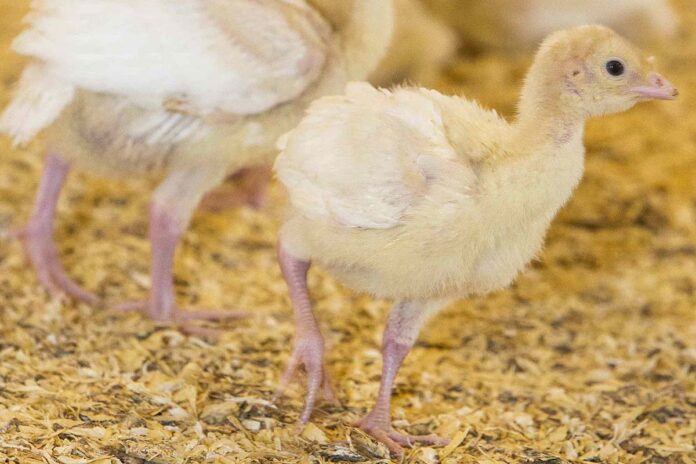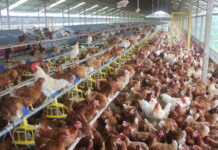
USPOULTRY and the USPOULTRY Foundation announce the completion of a funded research project at the University of Georgia in Athens, Georgia, in which researchers examined the role of Avian Pathogenic E. Coli (APEC) in turkey cellulitis.
The research was made possible in part by an endowing Foundation gift from the Cooper Family Foundation and is part of the Association’s comprehensive research program encompassing all phases of poultry and egg production and processing. A brief summary of the completed project is shown below.
Project #707: Potential Impact of Litter Quality on E. coli-Associated Cellulitis in Production Turkeys in Iowa – (Dr. Catherine M. Logue, University of Georgia, Athens, Georgia)
Dr. Catherine Logue and colleagues recently completed a research project that sought to assess the potential impact of the turkey production environment microbiome (including litter), as well as completed a Clostridiumcellulitis project to assess the role of litter and its quality on E. coli-associated cellulitis in turkey production. Overall research findings suggest that the primary cause of cellulitis in turkeys is likely linked with clostridia. However, the role of Avian Pathogenic E. Coli (APEC) in the disease process should not be overlooked, as well as how the organism interacts with the host and clostridia present.
Colibacillosis is considered one of the leading bacterial causes of economic loss in the turkey industry worldwide. Turkey cellulitis is also among the top health issues in turkey producers nationally, ranking as #3 in 2019 according to the United States Animal Health Association turkey industry survey. Avian pathogenic Escherichia coli (APEC) is one of the pathogens implicated in the disease after Clostridium spp. Cellulitis (also known as clostridial dermatitis) is characterized by locally extensive inflammation of subcutaneous tissues of the inguinal, tail and/or breast regions, often striking production toms at or near market age, resulting in increased mortality and carcass condemnation at slaughter and leading to multi-million dollar losses for the turkey industry.
In turkey production, losses as a result of cellulitis associated with Clostridium species are known. However there is considerably limited information as to the role of E. coli in cellulitis-associated disease in the Midwest, where turkey production is greatest and potential risk for losses are high. This project sought to assess the potential impact of the microbiome of the turkey production environment (including litter) and a Clostridium cellulitis project to assess the role of litter and its quality on E. coli-associated cellulitis in turkey production in Iowa.
Some of the key objectives included in the study aimed to:
- identify bacterial species associated with cellulitis in turkeys and detect the colonizing species of poultry litter;
- compare E. coli recovered from cellulitis cases with strains recovered from poultry litter; 3
- identify management factors that affect the prevalence of APEC and colibacillosis; and
- identify potential effective prophylactic measures that do not employ antimicrobial agents to reduce carcass condemnation rates.
Comparative analysis of APEC from tissues with strains in litter found that the majority of APEC were well defined pathogens capable of causing disease. A total of 333 isolates were assessed for the presence of virulence and antimicrobial resistance associated genes. Strains of E. coli detected were found to harbor multiple resistance traits including antimicrobial resistance and metals.
Overall data suggest that the primary cause of cellulitis in turkeys is likely still linked with clostridia. However, the role of APEC in the disease process should not be overlooked, as well as how the organism interacts with the host and clostridia present. The detection and presence of APEC in tissues and in litter also presents a second pathogen with a significant role in the disease process and the role of litter as a source of these organisms. Genetic profiles reflect the disease in the birds and dominant flora associated with disease in the litter. Likely, the role of APEC as a gateway organism for clostridia warrants further investigation and how it can synergistically act in the presence of the clostridia. Ongoing analysis beyond this study consists of information gathering of genetic data to determine how the profiles observed are associated with management factors that have the potential to impact poultry health.

















